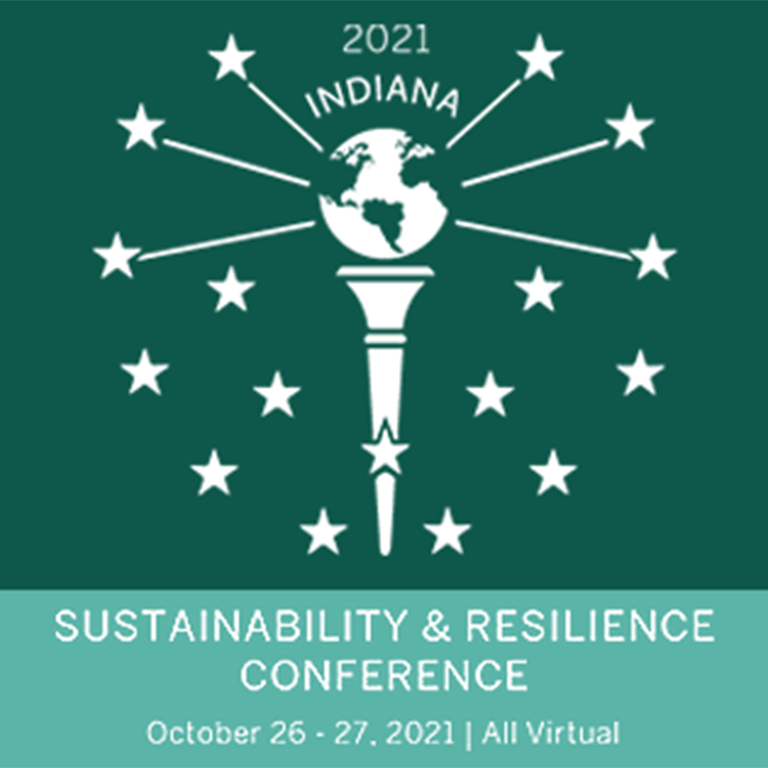A statewide virtual gathering of sustainability and environmental advocates shined a light on the Environmental Resilience Institute’s work helping Indiana communities address climate change.
The 2021 Indiana Sustainability and Resilience Conference, hosted by Indiana University Purdue University-Indianapolis’ (IUPUI’s) Office of Sustainability, brought together the state’s leading voices, including students, researchers, private industry professionals, and a host of other stakeholders, to plan for Indiana’s resilient future.
This year’s conference, which was made possible by support from the McKinney Family Foundation and presented by the Indianapolis Airport Authority, focused on accelerating climate action in Indiana, which ranks as one of the top 10 carbon polluters in the US. Throughout the event, organizers offered training sessions that showcased the variety of ways Hoosiers can take climate action locally.
Held on Oct. 26 and Oct. 27, the conference featured keynote addresses by ERI Executive Director Gabe Filippelli and Indiana State Representative Carey Hamilton, two training tracks for participants, and a virtual networking space.
“Not only is climate change here, it’s effects are bad and it’s impacting the communities and nations who are the most vulnerable and least resilient,” said Filippelli during his talk. “By helping to build local solutions, we’re helping to make Indiana more sustainable and more resilient to this reality.”
One training session featured ERI Resilience Cohort coordinator Steven Chybowski and Hannah Staley, a former Indiana Climate Fellow for the City of Huntington, Ind. The pair’s session reviewed the process of completing a greenhouse gas emissions inventory, one of the first steps communities can take to manage local emissions. Since 2019, ERI has guided 39 communities through the inventory process.
During the training, Chybowski emphasized the urgent need for people everywhere to act on climate change. “If we continue business as usual and do not reduce our greenhouse gas emissions, Indiana’s weather in the 2050s will closely resemble the temperatures of Texas today,” Chybowski said.
Hoosiers interested in seeing the projected impacts of climate change on their community can explore the Hoosier Resilience Index, an ERI-created tool tailored specifically for each county, city, and town in the state.
Other training sessions offered during the conference included tips for addressing top emissions sources, guidance for how to create a climate action plan, and advice for how to overcome obstacles when implementing a climate action plan. Through its Resilience Cohort program, ERI has helped 13 communities undertake the climate action planning process. Together, the communities identified the equivalent of nearly 14 million tons of carbon dioxide for elimination.
During her keynote, Hamilton shared her thoughts on Indiana’s opportunities to build a more climate resilient future while encouraging folks to build relationships with their representatives.
“At the community-level, I encourage each of you to get to know your legislator,” Hamilton said. “These conversations matter and they’re very, very important.”
About the Environmental Resilience Institute
Indiana University's Environmental Resilience Institute brings together a coalition of university scholars and leaders in government, business, and the nonprofit and community sectors to help Indiana better prepare for the challenges that environmental changes bring to Hoosiers' economy, health, and livelihood.





